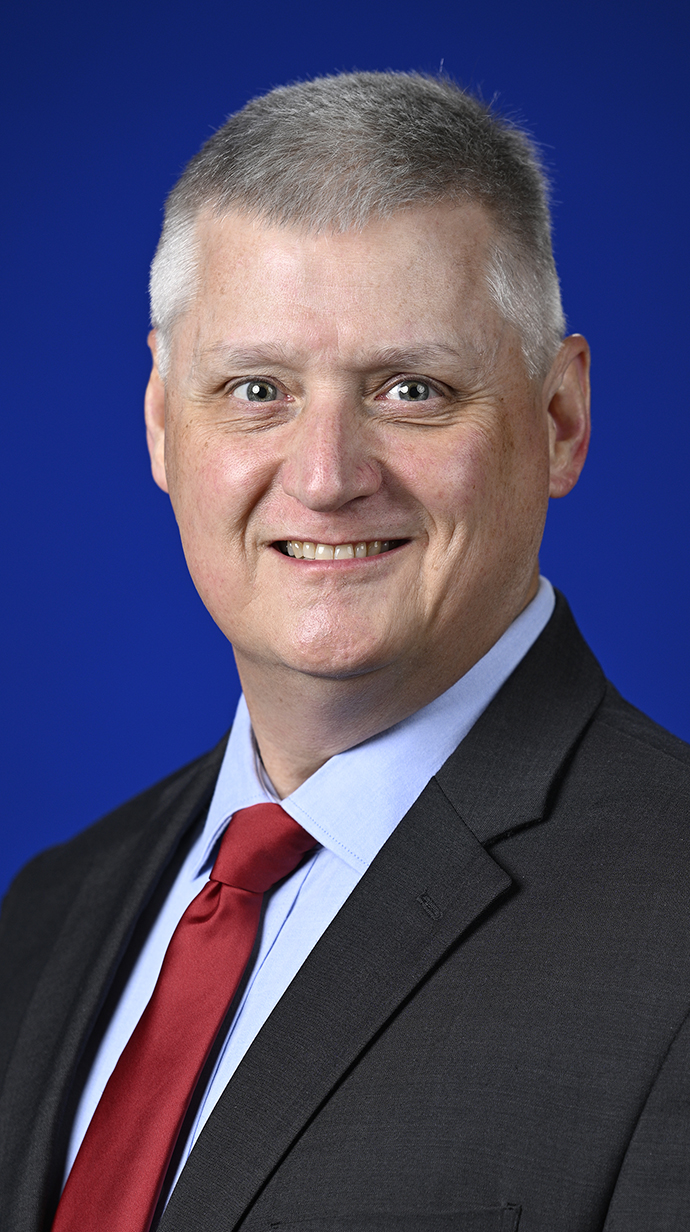UM Scientists Contribute to Landmark Particle Physics Result
Fermilab's Muon g-2 experiment sets a new global standard in precision

OXFORD, Miss. – Researchers at the nation's top particle physics lab have made the most precise measurements ever of the movement of subatomic particles called muons. These measurements can help scientists discern how the universe works at the smallest level.
The U.S. Department of Energy's Fermi National Accelerator Laboratory announced today (June 3) that its multinational collaboration, the Muon g-2 experiment, has reached its conclusion.
The Muon g-2 project sought to analyze muons – tiny subatomic particles similar to electrons – with unprecedented precision. As a muon spins in a magnetic field, it precesses, or "wobbles," like a top on a table. Every type of particle and force that exists in the universe affects how fast a muon precesses.

A complete understanding of the elements that affect a muon's precession could reveal new physics that challenge the current understanding of quantum mechanics and relativity, and could offer clues about the nature of dark matter.
"If the rate of the muon's precession matches what we expect from our current theory, then that indicates we've already found everything," said Breese Quinn, University of Mississippi professor of physics and director of the Center for Multimessenger Astrophysics. "But if our measured value is different, then we've discovered some new physics."
For a video explaining the final Muon g-2 measurement, click here.
Quinn has worked with Fermilab for more than 35 years, including the past 12 years on the Muon g-2 experiment.
"The importance of this measurement is, at the very least, that we have contributed toward a much better understanding of the universe as we know it," Quinn said. "And the experiment would not have been able to achieve this level of precision without the Mississippi group."
The Mississippi group – which includes Quinn, undergraduate, graduate and postgraduate researchers – was charged with storing the beam of muons and controlling its motion within the high-tech aluminum ring that lies at the heart of the experiment.
"Understanding and controlling that beam motion, specifically, was critical in enabling us to get this level of precision in our measurement," Quinn said.
The precision of the new measurement is 127 parts-per-billion, exceeding the measurement goal of 140 parts-per-billion.
"To put it in other words, this is like measuring the weight of an elephant to within a single grain of salt," Quinn said. "Or like exactly measuring the distance from the Lyceum to the Oxford courthouse to within the width of a single hair. But trying to measure those things if they were flying by at over 180,000 miles-per-second."

Breese Quinn, professor of physics and director of the Center for Multimessenger Astrophysics, tries out the features of an interactive display about the Muon g-2 experiment at Fermilab. Photo by Srijita Chattopadhyay/Ole Miss Digital Imaging Services
The 17-year project included 176 scientists from 34 institutions and seven countries, and provided learning opportunities for students and postgraduates at Ole Miss as well as other universities.
"This experiment is quite peculiar because it has very different ingredients in it," said Marco Incagli, a physicist with the Italian National Institute for Nuclear Physics at Pisa and co-spokesperson for Muon g-2. "It is really done by a collaboration among communities that normally work on different experiments.
"It was very valuable to see that when we had all these different experts come together, we could solve items that probably one group could not have done alone."
While there is still more information to be gleaned from the three-year data collection phase of the project, the researchers are sure that this measurement will be the most precise measurement of the muon magnetic anomaly for years to come.
"What's special is, although this experiment has ended, the Mississippi group isn't finished with the data," Quinn said. "Our students and researchers are going to continue to search for dark matter and potential violations of quantum mechanics and relativity.
"A lot of this project is finished, but we're not done yet."
Top: The core component of the Muon g-2 experiment at the Fermi National Accelerator Laboratory is a 50-foot superconducting electromagnet. UM physicist Breese Quinn is among the collaborators on the project that has made the most precise measurement ever of the movement of subatomic particles called muons. Photo by Ryan Postel/Fermilab
By
Clara Turnage
Campus
Office, Department or Center
Published
June 03, 2025
